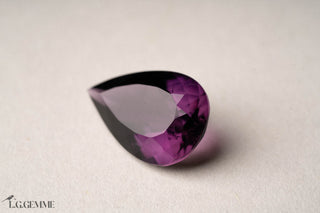Amethystos was a young and beautiful virgin who was traveling to pray at the temple of the goddess Diana, the protector of women. During her journey, she attracted the attention of Bacchus, the god of wine and feasts. Infatuated with her beauty and intoxicated by wine, Bacchus began to pursue her with romantic intentions, but the girl firmly rejected his advances.
When Bacchus tried to conquer her again, Amethystos prayed to the goddess Diana to save her and protect her from his advance. Diana, answering his request, transformed her into a white quartz crystal to preserve her purity and protect her from the god. When Bacchus saw the quartz statue and realized how disrespectful his behavior had been, he was overcome by a deep sense of remorse. As a gesture of repentance, he poured his wine on the crystal, dyeing it a magnificent purple hue and thus creating the first amethyst.
Although this story sounds like an ancient legend, it was actually created during the Renaissance by French poet Rémy Belleau in 1576. However, the idea that amethyst can prevent intoxication actually dates back to Ancient Greece. The word "amethystos" in Greek means "not drunk," and it was believed that anyone who wore or drank from an amethyst vessel would remain sober.
This myth helped solidify amethyst as a symbol of sobriety, purity, and protection, a meaning the gem still carries today.















Giulia
Molto interessante!!